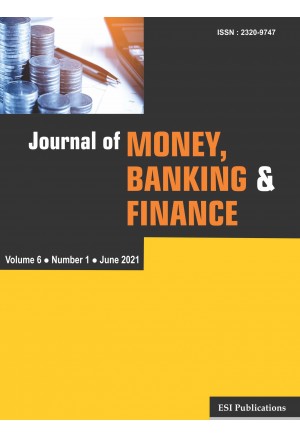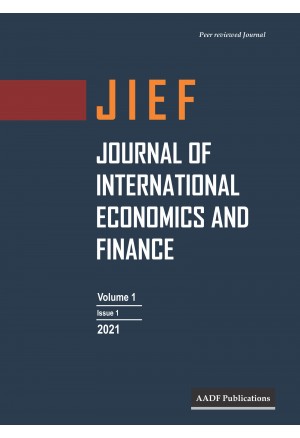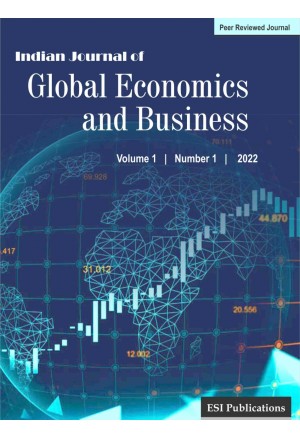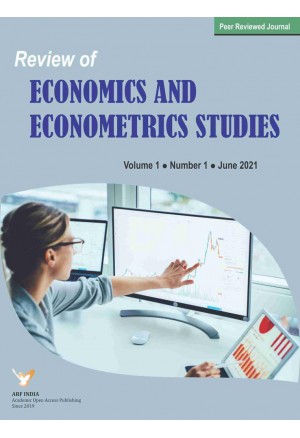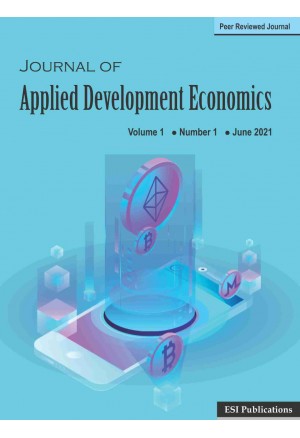IDPRIndian Development Policy Review
-250x365.jpg)
Peer Reviewed Journal
Find out more
Latest Articles :- Vol: (5) (1) (2024)
Navigating the Waters of Policy: Assessing the Impact of Bangladesh’s National Women Development Policy 2011 on Women in Char Areas
BY: Md. Deen Islam and Jamil Sayeed
Indian Development Policy Review, 2024, Vol: (5), Issue: (1), PP.1-14
Received: 18 March 2024, Revised: 24 April 2024, Accepted: 11 May 2024, Publication: 28 June 2024,
This paper critically examines Bangladesh’s National Women Development Policy 2011 (NWDP 2011) and its effectiveness in addressing the multifaceted challenges faced by women residing in char areas. Despite NWDP 2011’s commendable commitment to women’s empowerment and gender equality, this study highlights its limitations in catering to the unique vulnerabilities of women in char regions. Through a comprehensive SWOT analysis, the paper identifies the policy’s strengths in promoting gender equality and women’s roles, provision of support services, economic opportunities, and educational initiatives. However, it also unveils weaknesses, such as its limited focus on char areas and the absence of a gender-responsive budget. Opportunities for improvement include tailoring policies to char areas, fostering collaboration, increasing awareness and education, and leveraging data-driven insights. The paper underscores the importance of refining policies to ensure that every woman in Bangladesh, irrespective of her geographic location, can progress towards empowerment and gender equality.
Keywords: Women, Char, Economic Vulnerability, Social Vulnerability, Environmental Vulnerability
Md. Deen Islam & Jamil Sayeed (2024). Navigating the Waters of Policy: Assessing the Impact of Bangladesh’s National Women Development Policy 2011 on Women in Char Areas. Indian Development Policy Review, 5: 1, pp. 1-14.
Impact of Regulations on ECB Inflows
BY: Prachi Agarwal and Swami Prasad Saxena
Indian Development Policy Review, 2024, Vol: (5), Issue: (1), PP.15-29
Received: 28 March 2024, Revised: 30 April 2024, Accepted: 18 May 2024, Publication: 28 June 2024,
External commercial borrowings (ECB) are the loans availed by the resident entities from non- resident eligible lenders under norms established by the government. The government amends its policies from time to time to enable domestic enterprises to borrow from global markets. Since liberalization, Government of India also has relaxed its policies to allow Indian firms to access the international capital markets. Present study focuses on examination of the impact of key changes in ECB policy done by government of India on ECB inflows. This is performed by conducting CHOW breakpoint analysis and ARIMA modelling methodologies. The results of CHO break test indicate significant impact of policy changes on the pattern of capital inflows, and the findings of ARIMA model indicate a significant gap between actual and forecasted ECB inflows.
Keywords: External commercial borrowings, policy changes, liberalization
Md. Deen Islam & Jamil Sayeed (2024). Navigating the Waters of Policy: Assessing the Impact of Bangladesh’s National Women Development Policy 2011 on Women in Char Areas. Indian Development Policy Review, 5: 1, pp. 15-29.
Participation in Local Governance - A Comparison of PESA and Non-PESA Gram Panchayats in Madhya Pradesh
BY: Prakash M. Philip
Indian Development Policy Review, 2024, Vol: (5), Issue: (1), PP.31-43
Received: 08 May 2024, Revised: 14 June 2024, Accepted: 22 June 2024, Publication: 28 June 2024,
The PESA Act of 1996 stands as a significant political effort aimed at empowering tribal communities and transforming power dynamics. Its fundamental aim is to enable these communities to self-govern and maintain their cultural beliefs, values, and lifestyles. While originating from central legislation, the responsibility for its effective implementation lies with the state governments. An examination of governance under the PESA framework displays a varied readiness among Gram Panchayats to adopt progressive governance reforms. Some quickly adapt to the changing landscape, effectively leveraging their new powers and responsibilities, while others proceed more slowly. Additionally, some Panchayats struggle to fully grasp the scope of their delegated powers and responsibilities, often adhering to traditional operational modes. This article compares local governance participation and inclusion in PESA GPs with non-PESA GPs in Madhya Pradesh. The findings highlight the critical need to tailor administrative frameworks to the cultural contexts of tribal communities to achieve meaningful and lasting empowerment. It stresses the importance of targeted capacity-building efforts, enhancing community awareness, and promoting inclusive decision-making processes.
Keywords: PESA, Participation, Inclusion, Scheduled Tribes, Gram Sabha, Gram Panchayat, Local Governance.
Prakash M. Philip (2024). Participation in Local Governance – A Comparison of PESA and Non-PESA Gram Panchayats in Madhya Pradesh. Indian Development Policy Review, 5: 1, pp. 31-43.
Reviving Resilience: Analyzing Agricultural and Allied Investments in Bihar Amidst the COVID-19 Pandemic (1980-2022)
BY: Jitendra Kumar Sinha
Indian Development Policy Review, 2024, Vol: (5), Issue: (1), PP.45-69
Received: 08 May 2024, Revised: 14 June 2024, Accepted: 28 June 2024, Publication: 01 July 2024,
This study investigates the impact of investments in the Agriculture and allied, Industry, and Services sectors on the economic growth of Bihar, an underdeveloped Indian state prone to frequent natural calamities, including the COVID-19 pandemic over the past two years. Structural relationships are formulated to elucidate the interconnectedness between sectoral growth and investment. The stationarity of variables is evaluated using the Augmented Dickey-Fuller test. Ordinary Least Squares (OLS) analysis is employed to estimate the structural relations, with particular attention to the contribution of investments in the agriculture and allied sectors to overall economic growth. Furthermore, alternative simulation scenarios are examined to advocate for increased public sector investment in Agriculture and allied sectors, aimed at promoting sustainable economic development. This comprehensive analysis offers technical insights into the crucial role of strategic investment in agriculture and allied sectors for attaining economic prosperity.
Keywords: Growth, Inter–Sector Linkages, Stationarity of variables, Augmented Dicky – Fuller Test, Augmentation of Public Investment, Agriculture & Allied Sector.
Jitendra Kumar Sinha (2024). Reviving Resilience: Analyzing Agricultural and Allied Investments in Bihar Amidst the COVID-19 Pandemic (1980-2022). Indian Development Policy Review, 5: 1, pp. 45-69.
Possibility of Rationalizing the use of Water Resources in Egyptian Agriculture Rational use of Water (RUW) in Nile Delta
BY: Youssef M. Hamada
Indian Development Policy Review, 2024, Vol: (5), Issue: (1), PP.71-116
Received: 09 May 2024, Revised: 12 June 2024, Accepted: 19 June 2024, Publication: 28 June 2024,
The agricultural sector faces several challenges is facing the natural increase in the used water for various purposes in the future. It is adequate to show that the agriculture sector in Nile Delta used to consume about 48 billion m3 / year to irrigate about 8 million feddan even in 2010. And starting from 2017, it will bear the burden of irrigation for about 11,374 million feddan, by quantities of water amounting to about 36.750 billion m3. It imposes the need to follow policies that make sure the rationalization of irrigation water consumption. And by contrasting the current water resources with the existing water uses, it becomes clear that the current water resources are less than the existing water uses by about 16.4 billion m3. And that the development of water resources is either by exploiting the water availability resources in the best use without losing and rationalizing their exploitation and increasing the efficiency use (vertical development of water resources) or by increasing of the water available resources and increasing the economic supply for it in the future (horizontal development of water resources). And as it becomes clear of this, the proportion of what horizontal development can give is estimated at 49% whereas, vertical development can grant about 51% of the savings resulting from the development of water resources.
Due to the variation of water resources, their sources, and their uses, drawing a plan for the future use of water resources is significant which, is necessary to understand and develop many policies, including the agricultural policy, which necessarily requires a water policy. Therefore, before setting a future water policy, consideration must be taken the clear contrast between the nature of water resources and a land resource, if that is possible. So that it would be possible to direct agricultural production activities towards this goal, as they achieve one of the main aspects of the development goals and realize benefit from the advantages of specialization and comparative advantage.
Keywords: Rational use of water (RUW) in Nile delta
Youssef M. Hamada (2024). Possibility of Rationalizing the use of Water Resources in Egyptian Agriculture Rational use of Water (RUW) in Nile Delta. Indian Development Policy Review, 5: 1, pp. 71-116.
Demand for Consumer Durables in India: Quantile Regression Estimation of Household Expenditure on Durable Goods
BY: T. Lakshmanasamy
Indian Development Policy Review, 2024, Vol: (5), Issue: (1), PP.117-130
Received: 29 April 2024, Revised: 29 May 2024, Accepted: 15 June 2024, Publication: 28 June 2024,
Household expenditure on consumer durable goods varies across socioeconomic, demographic, community, literacy, income, and place of residence. The objective of this paper is to analyse the distributional effects of the determinants of durable goods expenditure of households in Tamil Nadu using the NSSO 68th round data, applying the quantile regression method. The study finds a positive relationship between income and durable goods expenditure across all households and such expenditure increases at higher quantiles. There also exist significant differences across regions and communities. The effect of family size on durable goods expenditure is negative. The backward community households spend significantly more on durable goods than the SC/ST households. Households with a regular salary earner and business or self-employment consume more durable goods compared to other households. Households with male heads spent more on durable goods compared to female-headed households. Households with elders spend more on durable goods.
Keywords: Consumer durable goods, household expenditure pattern, socioeconomic background, earnings and income, quantile regression
T. Lakshmanasamy (2024). Demand for Consumer Durables in India: Quantile Regression Estimation of Household Expenditure on Durable Goods. Indian Development Policy Review, 5: 1, pp. 117-130.
Public Expenditure on Health at State Level in India: Deciphering the Regional Divides and Dynamics
BY: Aboobacker Thachaparamban
Indian Development Policy Review, 2024, Vol: (5), Issue: (1), PP.131-150
Received: 22 April 2024, Revised: 21 May 2024, Accepted: 18 June 2024, Publication: 28 June 2024,
The size of public expenditure on health is very low in India compared to many other countries of the world. The size of public expenditure also vary between states in India. India has witnessed economic reforms in 1991 and the various states have chosen varying tracks of development strategies since then. The health expenditure of state governments might have moved in varying direction during the period since 1991 accruing to these differences in development strategies and various other social, economic, political and demographic diversities across states. The existing literature does not provide a clear cut picture on the thirty years long trends and patterns in public expenditure on health at the state level in India since 1991. Given this context, this paper attempts to analyse the trends and patterns in public expenditure on health at state level in India since 1991. The regional divides and dynamics in health spending size of the state governments are analysed in an in-depth manner through this paper. The analysis finds the diverging variation in the size of public spending on health across states over the years since 1991. The north-south divide is clear in the size and trends of public spending on health in India while the income divide is not much evident. The size and trends of health spending also vary between different development typology categories of states.
Aboobacker Thachaparamban (2024). Public Expenditure on Health at State Level in India: Deciphering the Regional Divides and Dynamics. Indian Development Policy Review, 5: 1, pp. 131-150.
Copyright ©2023 ESI Publications. All Rights Reserved


